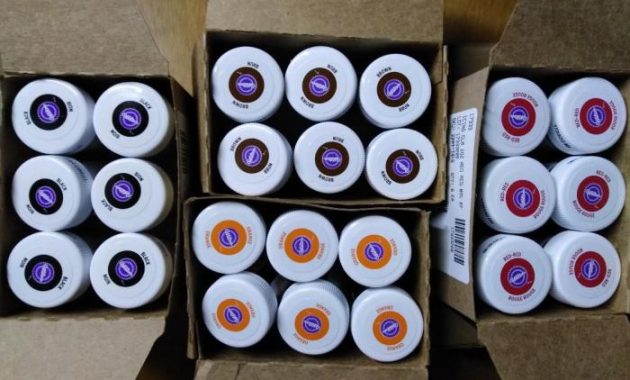Chemical Properties and Stability of Natural Food Colorants: Natural Coloring For Food
Natural coloring for food – Natural food colorants, derived from plants, animals, and microorganisms, offer a vibrant palette for enhancing the aesthetic appeal of food products. Understanding their chemical properties and the factors affecting their stability is crucial for maintaining color integrity throughout processing, storage, and shelf life. This section will explore the chemistry of common natural colorants and their susceptibility to environmental influences.
Chemical Structures and Properties of Common Natural Food Colorants
Natural food colorants possess diverse chemical structures, which directly impact their color, solubility, and stability. Anthocyanins, for example, are water-soluble pigments found in berries, grapes, and red cabbage. Their color, ranging from red to blue depending on pH, is attributed to their flavylium cation structure. Carotenoids, responsible for the yellow, orange, and red hues in many fruits and vegetables, are lipid-soluble compounds with a polyene chain structure.
Chlorophylls, imparting green color to leafy vegetables, are magnesium-containing porphyrin complexes. Betalains, found in beetroot and prickly pear, are nitrogen-containing pigments that exhibit yellow (betaxanthins) and red-violet (betacyanins) colors. These differences in chemical structure lead to variations in their stability and reactivity.
Factors Influencing the Stability of Natural Food Colorants, Natural coloring for food
Several environmental factors significantly influence the stability and degradation of natural food colorants. pH changes can drastically alter the color of anthocyanins, causing shifts from red to blue or even colorless forms. High temperatures accelerate degradation reactions, leading to color fading and browning. Exposure to light, particularly ultraviolet (UV) light, can initiate photo-oxidation, causing bleaching and color loss.
Oxygen also plays a critical role, contributing to oxidative degradation and discoloration. Additionally, the presence of enzymes, such as polyphenol oxidases, can catalyze reactions that lead to color changes. Controlling these factors is essential for preserving the color of food products.
Effect of Environmental Factors on the Stability of Natural Food Colorants
The following table summarizes the effects of pH, temperature, and light exposure on the stability of three common natural food colorants: anthocyanins, carotenoids, and chlorophylls. The observations are based on general trends and can vary depending on the specific source and processing conditions.
| Factor | Anthocyanins | Carotenoids | Chlorophylls |
|---|---|---|---|
| pH (change from optimal) | Significant color shift; fading or color change | Relatively stable | Relatively stable |
| Temperature (increase) | Increased degradation; color fading | Increased degradation; isomerization | Increased degradation; pheophytin formation (loss of Mg) |
| Light Exposure (UV) | Photo-oxidation; bleaching | Photo-oxidation; bleaching | Photo-oxidation; bleaching |
Creating a Color Chart Illustrating Color Intensity Changes
To illustrate the changes in color intensity over time for a selected natural food colorant, let’s consider anthocyanins extracted from red cabbage. A solution of red cabbage extract can be prepared and divided into several samples. These samples can then be stored under different conditions: (1) room temperature and ambient light; (2) refrigeration and darkness; (3) room temperature and darkness; (4) refrigeration and ambient light.
The color intensity of each sample can be measured periodically (e.g., daily or weekly) using a spectrophotometer or visually compared using a standardized color chart. The results can be plotted on a graph showing color intensity (e.g., absorbance at a specific wavelength) versus time, illustrating the effect of storage conditions on color stability. For example, the sample stored at room temperature and exposed to light would likely show the most rapid color loss, while the sample stored in refrigeration and darkness would retain its color for a longer period.
The resulting chart visually demonstrates the impact of storage conditions on anthocyanin stability.
FAQ Guide
Are natural food colorings always healthier than artificial ones?
Not necessarily. While many natural colorants come from wholesome sources, some can have potential allergens or other health considerations. It’s always best to check labels and be mindful of individual sensitivities.
Can I make my own natural food colorings at home?
Absolutely! Many natural colorants are easily extracted at home using simple methods like boiling or blending. Just remember that the intensity and stability might vary compared to commercially produced options.
How long do natural food colorings last?
It depends on the specific pigment, storage conditions (light, temperature, oxygen exposure), and the food product itself. Some are incredibly stable, while others are quite delicate and may fade quickly.
Are all natural food colorings approved for use in all countries?
Nope. Regulatory frameworks vary widely across different regions, so a colorant permitted in one country might not be approved in another. Always check local regulations before using a specific natural food coloring in your products.
Embrace the vibrant hues of nature, reflecting the earth’s bounty in our food. This inherent beauty extends beyond the edible, as we discover unexpected connections; for instance, the artistry of food coloring wood stain reveals a parallel path to natural coloration. Ultimately, the quest for authentic color, whether in nourishing meals or handcrafted objects, leads us to a deeper appreciation for the earth’s gifts.

